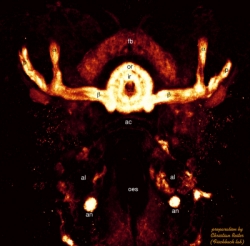 Can antidepressive medicine alter your decision behaviour? A recent paper in Science now demonstrates that alterations in subjects’ serotonin levels leads to significant changes in their decision making behaviour. In the study, subjects were set to play the Ultimatum Game repeatedly. Subjects had to do the task two times at two different days, and at one of the days they were administered an acute tryptophan depletion (ATD), i.e., their serotonin levels would drop for a period of time. The design was double-blind and placebo controlled.
Can antidepressive medicine alter your decision behaviour? A recent paper in Science now demonstrates that alterations in subjects’ serotonin levels leads to significant changes in their decision making behaviour. In the study, subjects were set to play the Ultimatum Game repeatedly. Subjects had to do the task two times at two different days, and at one of the days they were administered an acute tryptophan depletion (ATD), i.e., their serotonin levels would drop for a period of time. The design was double-blind and placebo controlled.
The Ultimatum Game is an experimental economics game in which two players interact to decide how to divide a sum of money that is given to them. The first player proposes how to divide the sum between themselves, and the second player can either accept or reject this proposal. If the second player rejects, neither player receives anything. If the second player accepts, the money is split according to the proposal. The game is played only once, and anonymously, so that reciprocation is not an issue.
What the researchers found was that the ATD led subjects to reject more offers, but only unfair offers. That is, ATD did not interact with offer size per se, and there was no change in mood, fairness judgement, basic reward processing or response inhibition. So serotonin seemed to affect aversive reactions to unfair offers.
The study is a nice illustration of how we now are learning to induce alterations in preferences and decision making. Along with other studies using, e.g., oxytocin to increase trust in economic games (see also my previous post about this experiment), one may expect that increasing the serotonin level may actually make subjects less responsive to unfair offers.
This knowledge is also important to learn more about, as it poses a wide range of ethical problems. If our preferences and decisions are really influenced by these stimuli, can this be abused? It should be mentioned that many of these substances are not necessarily detected (oxytocin is odourless), so we may be influenced without our consent or knowledge. The wide applicances could include casinos, stores (e.g. for expensive cars), dating agencies and so on. If we did not accept subliminal messages in ads, how can we accept this?
-Thomas

 The next
The next 

